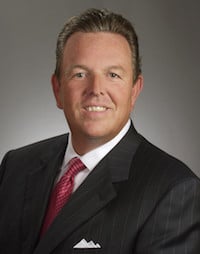There are an estimated 11,000 hedge funds worldwide managing a total of $2.6 trillion. The universe is broad and varied, and by extension hedge-fund administrators need a broad and varied toolbox to success in the business of providing funds with an outsourced back office.
Financial giant State Street has such a toolbox.
“State Street’s scale and commitment to leading technology and people allows us to offer comprehensive solutions for fund managers,” said George Sullivan, executive vice president and global head of State Street’s Alternatives Investment Solutions group.
“We try to be nimble and quickly respond to market demands,” Sullivan told Markets Media. “We’re able to do that with the backdrop of having State Street’s primary business be custody and fund administration. Our investment in our people and our technology gives us a strong competitive advantage.”
The hedge-fund sector expanded rapidly between 1997 and 2007, but the global financial crisis of 2008-2009 took its toll and growth has been modest and uneven since then. Without steady growth in the number of hedge funds and total assets under management, fund administrators have had to buy growth.
“Most of our alternatives business is made up of a number of acquisitions that we’ve done over the years,” Sullivan said. Most notably, this included State Street’s 2012 purchase of Goldman Sachs’ fund-admin unit for $550 million, a deal that made State Street the world’s biggest servicer of hedge funds.
The acquisitions brought customers as well as broad industry expertise. “We have people with real specialties in terms of their knowledge of the alternatives world, whether it’s hedge-fund administration, or private equity, or real estate,” Sullivan said. “We will continue to develop our solutions and build experienced teams. This industry can be complicated, and having hedge-fund intellectual capital puts us at an advantage to offer our clients the best solutions possible.”
According to a 2014 PwC report, four trends are driving growth in the fund-admin business: an increased need for regulatory reporting; manager and product convergence; cost-efficient fee operations; and expanded outsourcing.
In their ongoing quest to generate investment returns with low correlation to market indices, replace the yield of bonds, and manage portfolio risk, many hedge funds continue to develop more esoteric strategies to differentiate themselves. Additionally, waves of new regulation in the U.S. and Europe have added an unprecedented compliance burden.
Sullivan is bullish on the space. “In 2014 global hedge-fund managers continued to pursue performance with more complicated global strategies against a complicated regulatory backdrop,” Sullivan said. “I have high expectations for 2015, and so do hedge-fund managers. As more retirement vehicles are pursuing alpha and returns to fill asset-liability gaps, they’ll need asset managers to perform.”
Sullivan cited a recent State Street survey of more than 200 hedge funds globally, which showed that 55% of respondents expect pension funds to increase their exposure to hedge fund strategies over the next five years. “We try to put great people in place, who can drive good technology for the benefit of our clients,” he said.


